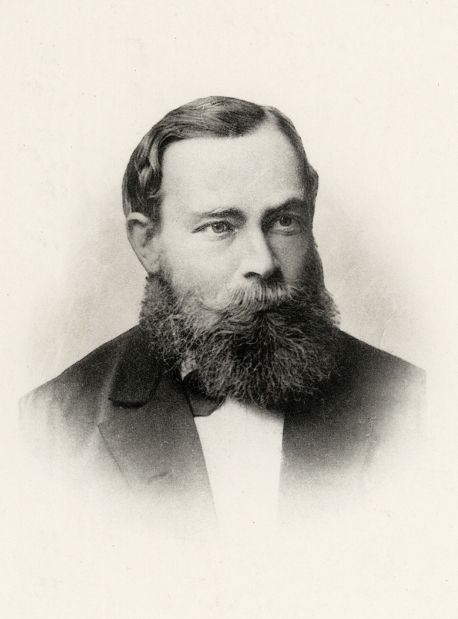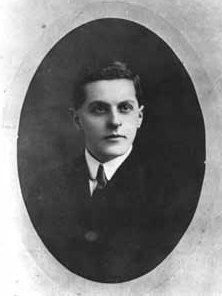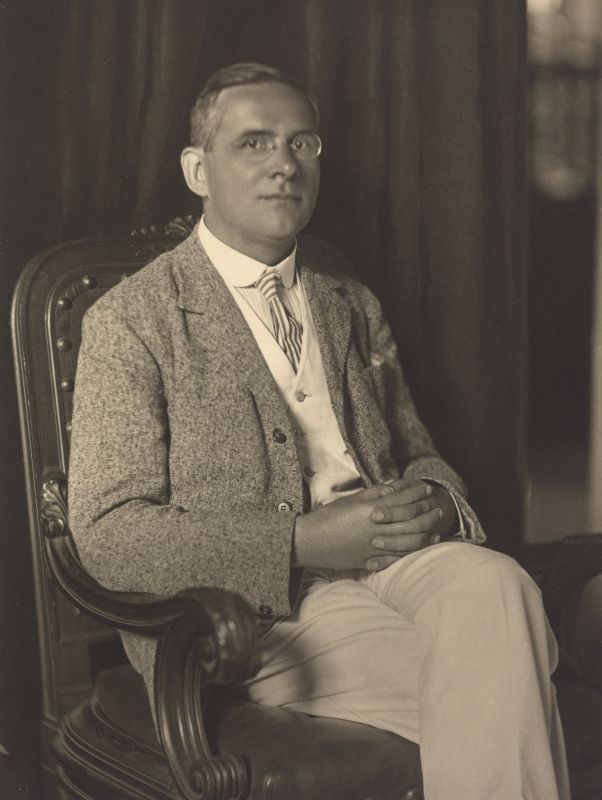
(Source: Wikimedia Commons)
Why do we care so much about meaning?
Before delving into the consequences of classical explorations of meaning, let us discuss why philosophers take this subject so seriously.
Just as mathematics is the medium through which the exact sciences are developed and communicated, Language is the medium through which philosophy operates.
As we have seen with classical theories of meaning (in the previous post link), at least some aspects of meaning appear to reside within the mind. While mathematical entities can be defined in objective terms and constructed upon a few axioms, linguistic entities resist objective definitions and cannot be proven from axioms.
This poses a significant problem. For philosophical arguments to be made and communicated rigorously, the concepts used in arguments must not rely on subjective interpretation. If these concepts (represented by sentences, logical propositions, etc.) are not uniformly interpreted by all parties, philosophical debates are forever in danger of devolving into utter confusion.
Gottlob Frege was among the first to point out this problem. He argued that an objective medium of representation was crucial for the philosophical debate to be developed on firm foundations. This idea was so influential that the following decades saw the study of Language become one of the primary focuses of Western philosophy; a development largely known as the Linguistic Turn.

(Source: Wikimedia Commons)
Logical Atomism
It was Bertrand Russell who coined in 1911 the term Logical Atomism. In short, it describes a methodology that uses logical analysis to identify the mutually independent constituents of our conception of reality.
The name deliberately evokes the analytical methods of physical sciences. Regardless of the scale of analysis (atoms, molecules or planets); physical sciences’ models operate on clearly demarcated elements more basic than the entity under investigation. Logical Atomism attempts to do the same in the realm of thought. Its domain is not reality, but our conception of reality. Its method involves an analysis of logical entities, not physical ones.
You can see how this position relates to the Linguistic Turn. Since linguistic objects make complex references to reality, their sense (which resides inside individuals’ minds) are hard to standardize. Without standardization, it is difficult for the community to develop and communicate theories. Therefore, the first step in a robust methodology for philosophy must be to discover the basic logical constituents with which to conduct philosophy.
Logical Atomism describes a specific methodology for breaking down propositions into atomic components; whereas the broad movement among philosophers toward a general focus on analytical methods is called Analytic Philosophy. Most prominent figures in the early years of Analytic Philosophy were also proponents of Logical Atomism.

(Source: Wikimedia Commons)
Tractatus Logico-Philosophicus
Russell described Logical Atomism as a position that developed from his discussions with his former student Ludwig Wittgenstein. Indeed, Wittgenstein’s Tractatus Logico-Philosophicus, first published in 1921, arguably provides the clearest description of it. Wittgenstein observed the shortcomings of Language in philosophical debate and searched for the boundaries of meaningful discourse. His efforts culminated in the Tractatus.
The Tractatus was one of the most influential works in 20th-century philosophy. It is a 75-page book consisting of 525 declarative statements. These statements are structured in a hierarchy of numbered paragraphs, where seven basic propositions are elaborated by a number of second-tier propositions, which are elaborated in turn by a number of third-tier propositions and so on. On a meta level, the structure of the Tractatus reflects the analytical methodology Wittgenstein used and argued for.
The basic propositions are as follows (using the Pears/McGuinness translation for the first six and the Ogden translation for the final one.):
- 1. The world is all that is the case.
- 2. What is the case – a fact – is the existence of states of affairs.
- 3. A logical picture of facts is a thought.
- 4. A thought is a proposition with sense.
- 5. A proposition is a truth-function of elementary propositions. (An elementary proposition is a truth-function of itself.)
- 6. The general form of a truth-function is
. This is the general form of a proposition.
- 7. Whereof one cannot speak, thereof one must be silent.
Starting with the largest possible domain, the world, Wittgenstein defines the basic constituents of logical representation. He also defines thought and connects it to both facts in reality and propositions in logic. (Careful readers will recognize the symmetry between the triadic description here and the triadic description of meaning in the previous post: sign, sense and reference.)
Without trying to give a summary of such a dense and concise text, a more transparent and accessible rewording of some of the ideas related to Wittgensteinian Logical Atomism could be the following:
- The world is the totality of atomic facts, and the fact that these facts are all of the facts.
- Facts may or may not be composite. (They may or may not contain other facts.) Atomic facts only contain objects.
- Names are symbols that denote objects. A name only gains meaning in the context of a sentence.
- A proposition asserts a fact when its constituents relate to each other in the same way the constituents of the fact relate to each other.
- A proposition that asserts an atomic fact is an atomic proposition. All atomic propositions are logically independent.
- Logical inference deals with propositions that are not atomic. This process is formulated in truth-functions.
- Thoughts are both logical pictures of facts and propositions with sense.
In Wittgenstein’s own words, the Tractatus dealt with the fundamental problem of philosophy:
The main point is the theory of what can be expressed (gesagt) by prop[osition]s – i.e. by language – (and, which comes to the same thing, what can be thought) and what can not be expressed by pro[position]s, but only shown (gezeigt); which, I believe, is the cardinal problem of philosophy.
Building on his formulation of facts and propositions, Wittgenstein arrives at a striking conclusion regarding the status of philosophy. In his view, philosophy must be concerned with the medium of representation, Language; rather than with reality itself, as physical sciences do. The limits of Language are the limits of philosophy and the limits of thought. Within these limits, “what can be said can be said meaningfully, and the rest can only be shown”.
The Tractatus had a significant impact on early 20th-century philosophy and inspired many prominent philosophers. After its publication, Wittgenstein took a long break from philosophy. When he returned, he was not pleased with how his work had been interpreted. His work afterwards is considered part of the Later Wittgenstein persona, whose ideas are interpreted very differently than those of Early Wittgenstein. We will explore the second part of this story in the next post.

(Source: Wikimedia Commons)
Vienna Circle
Once the vision for restructuring the foundations of philosophy was formulated by Russell and Wittgenstein, many prominent scholars took up the challenge of advancing the program.
The Vienna Circle, created by Moritz Schlick in 1924 and active until 1936, generated significant debate about the nature of philosophy and science. Amid rapidly advancing sciences, the Circle attempted a radical restructuring of philosophy based on empiricism. Its core doctrine was the Verification Principle: For a statement to be meaningful, it had to be verifiable either by direct observation or logical proof.
Philosophical knowledge can be categorized based on two dichotomies. The first is concerned with the source of knowledge: a priori (independent of experience), and a posteriori (derived from experience). The second dichotomy is concerned with the method of attaining knowledge: synthetic (incorporation of knowledge outside the premises) and analytic (analysis of the premises).
Immanuel Kant believed that synthetic a priori concepts were necessary for experience to be possible. In other words, he believed it must be possible to attain knowledge that is neither derived from experience nor present in the premises. The Vienna Circle, however, radically rejected this position. In their view, logical proof (analytic, a priori) and direct observation (synthetic, a posteriori) were the only two ways of attaining knowledge.
Following this thinking, and in line with the claims of the Tractatus, the Vienna Circle believed that the main objective of philosophy should be the clarification of the medium of representation, which is Language. Through numerous publications and academic events, they propagated a novel way of thinking about philosophy and sciences. This paradigm was called Logical Positivism.
The ambitious program soon generated controversy both outside and inside the circle. Rudolf Carnap, a well-known advocate for Logical Positivism, adopted a more liberal interpretation of the Verification Principle. He recognized that the truth of a proposition is relative to the framework used in evaluation. In other words, the truth of a proposition cannot be unconditional. This is a powerful remark on the limitations of the principle.
Many other criticisms were developed against Logical Positivism. The Circle was routinely accused of reductionism and foundationalism. The Circle’s strict anti-metaphysical stance was deemed unaccommodating for complex scientific theories.
These criticisms gained more followers over the years. Later versions of Logical Positivism, such as Logical Empiricism, made weaker assumptions. Neither of these movements are active research programs today. However, Analytic Philosophy, which emerged from the methodology developed in the process, still thrives.
Summary and What’s Next
In this post, we explored how the central position of Language in philosophical debate was recognized by philosophers. The ensuing movement, known as the Linguistic Turn, dominated decades of philosophical discussion. Tractatus Logico-Philosophicus was a crucial work that outlined the limits to philosophical analysis. Offshoots of this thinking, such as Logical Atomism, Logical Positivism and Logical Empiricism were ambitious programs of logical analysis, but ultimately they fell short in delivering comprehensive results. Analytic Philosophy inherited their methodology and continues to be active field today.
In the next post, we will look into the interesting life and later work of Ludwig Wittgenstein, who left a distinctive mark on 20th-century philosophy. His ideas influenced many prominent philosophers and continue to be the subject of discussion even a century later.
Further Reading and References
Standford Encyclopedia of Philosophy offers an excellent article on Logical Atomism. Readers interested in Logical Positivism may find the debates of the Vienna Circle interesting, also detailed in the Encyclopedia. Last but not least, I wholeheartedly recommend reading the Tractatus Logico-Philosophicus.
- Proops, Ian, “Wittgenstein’s Logical Atomism”, The Stanford Encyclopedia of Philosophy (Fall 2022 Edition), Edward N. Zalta & Uri Nodelman (eds.), URL = <https://plato.stanford.edu/archives/fall2022/entries/wittgenstein-atomism/>.
- Uebel, Thomas, “Vienna Circle”, The Stanford Encyclopedia of Philosophy (Summer 2024 Edition), Edward N. Zalta & Uri Nodelman (eds.), forthcoming URL = <https://plato.stanford.edu/archives/sum2024/entries/vienna-circle/>.
- Wittgenstein, L. (1998). Tractatus Logico-Philosophicus (471st ed.). Dover Publications.